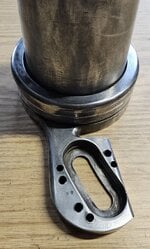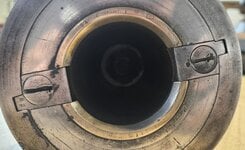mr.hermitsquid
Recruit
- 2
- Apr 15, 2024
I recently purchased a propeller blade and I was hoping for any information that people can provide. I am still working on deciding how to finish it so any information on paint or finish would also be appreciated. There are quite a few similar props, so I want to try and be as accurate as possible. There are also a number of symbols (especially the heart) that I do not know the meaning of. Any and all information much appreciated. Thanks!
Here are the details:
Weight: 28lbs
Hight (Tip to base): approximately 44in
Text: DWG 6135A 15 CHG X U(anchor)S HSP 5 MFG T3526 CONT. LL 92031
Reverse Text: SHANK 56150 CHG E
Base: S (or 5 I cant tell) 4 51546 F (Heart(140)) (box(9))
Base: (Dimond)HT 115 D
Here are the details:
Weight: 28lbs
Hight (Tip to base): approximately 44in
Text: DWG 6135A 15 CHG X U(anchor)S HSP 5 MFG T3526 CONT. LL 92031
Reverse Text: SHANK 56150 CHG E
Base: S (or 5 I cant tell) 4 51546 F (Heart(140)) (box(9))
Base: (Dimond)HT 115 D







